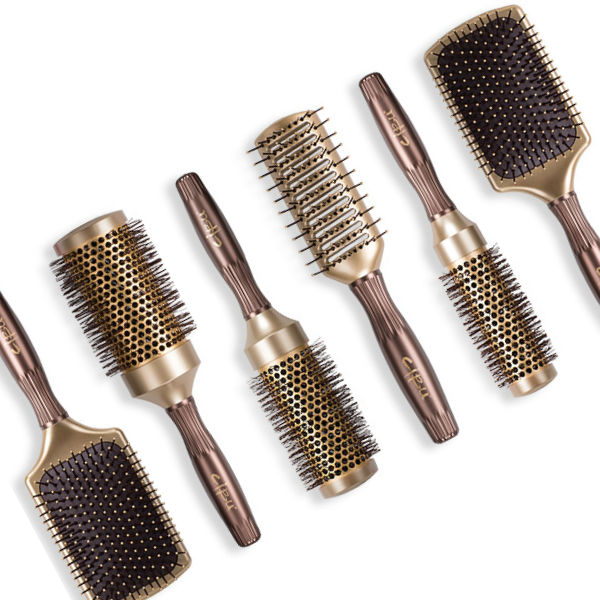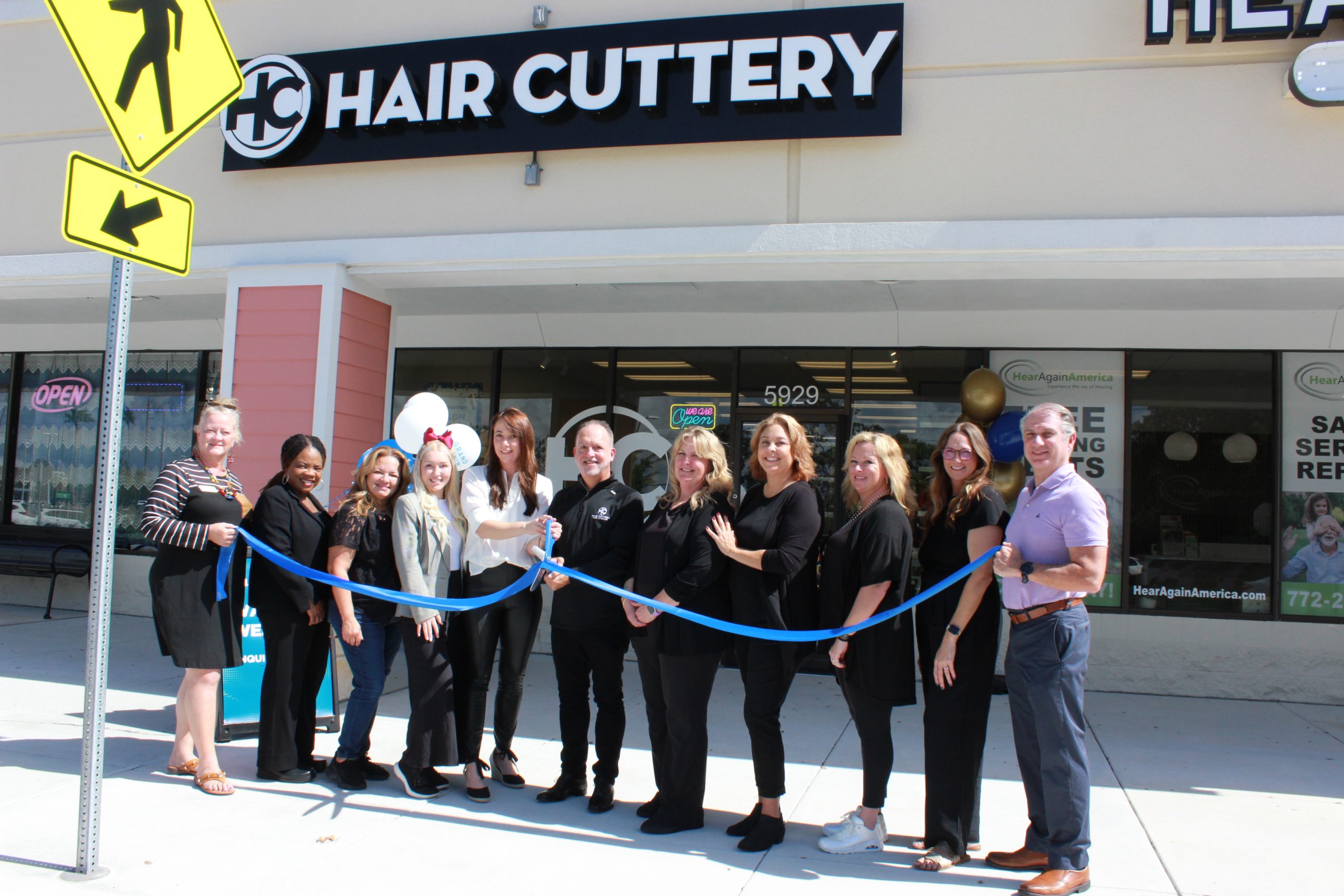Sometimes it’s about color. Sometimes it’s about the cut. Sometimes it’s about styling products. And sometimes it’s about the brush. There are many components that go into great hair and it can even be as simple as using the correct styling brush for your hair type and texture. Whether you’re male or female, with curly hair or straight hair, fine hair or coarse hair, let’s talk about which brushes will make your hair care routine easier.
Spring is in the Air…
And along with the household spring cleaning, sprucing up your look might be just what you need to feel a burst of energy with the changing season. The good thing is, this doesn’t necessarily entail a whole new look. It simply means it might be time to buy new brushes!
You may be thinking “a brush is a brush,” but it isn’t that cut and dry. There is a large variety depending on the texture of your hair, the length of your hair, and the amount of body you’re hoping to achieve. Not only do we use brushes to detangle our hair, achieve the perfect blowout or smooth frizz, but brushes are also important for our scalp. Brushing your scalp helps stimulate growth, spread natural oils down the hair shaft and remove product buildup. Now you’re probably wondering which tools are best, so let’s dive in.
Curls, Curls, Curls
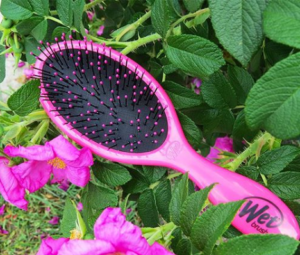
Let’s begin with curly hair. Curls range from tight to loose, can include any hair type from fine to coarse, be natural or chemically achieved, and can be worn on someone who never brushes to someone who over-brushes. Those who never brush or comb likely fear poof and frizz—understandably so! However, the lack of brushing isn’t totally helpful. If you enjoy wearing your hair curly, a wide-tooth comb in the shower may work best for you. Comb while the conditioner is in, then rinse and it won’t negatively affect the styled outcome—but it will help move along the shedding hair and make your scalp happy.
If combing your hair after showering doesn’t ruin your final style, try a brush specifically designed for wet hair that will have long, narrow, flexible bristles intended to power through tangles without adding too much tension. We recommend the Wet Brush for the job! Use the brush lightly, though, and do not rip through snarls; gently work them out, then add product and let your curls dry naturally or with a diffuser. It does depend on the style you desire, but once your curls are dry, brushing or combing may cause unwanted poof as the defined curls will shift apart, forcing them to lose shape, so be mindful of this and don’t over-brush.
Smoothing Those Curls
No matter the amount of curl you have, there may be days you prefer a nice, smooth blowout. You should still brush or comb the hair when wet, add product, then use a round brush to style it. If your hair is curly but fine to medium textured, you could use either a boar bristle or nylon bristle brush. These bristles move oils along the hair shaft which make hair smoother and shiner. If your hair is really thick and coarse, a brush with both nylon and boar bristles would be ideal because the nylon bristles will help detangle and boar bristles will smooth. Really work this brush through the hair until fully dry to minimize the poof that can easily happen to curls that haven’t been smoothed thoroughly.
Round brushes come in a variety of barrel sizes and would be chosen based on how much bounce and wave you desire—the smaller the barrel, the tighter the wave. As a guide, larger barrels are typically used for longer hair and smaller for shorter. Also, if the barrel is ceramic coated, this will help the hair dry faster and since it heats up from the hairdryer, helping to set your style more than a wooden barrel. Both are good options—it just depends on your hair goal.
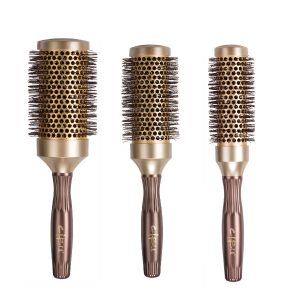
Working with Straighter Hair
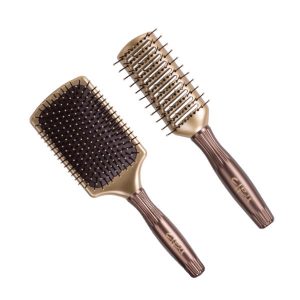
Straighter hair can mean fine, medium or coarse hair that lacks a true curl but still may have some wave. Unlike your curly-haired friends, you may not fear a brush. Lots of people with hair styled straight brush several times a day to keep it looking smooth.
Fine hair naturally tangles more, especially when wet. This is where brush selection is important because you don’t want to tug on those tangles. When your hair is wet, a wide-tooth comb or a wet brush (designed with long, narrow, flexible bristles) will help minimize the stress on your hair while detangling. Stress can equal breakage so this is super important. Wide-tooth combs and wet brushes are a great option for any hair type, but medium to coarse hair may untangle easier so traditional, nylon bristled hairstyling brushes are also an option. Once your morning snarls have been remedied, it’s time to style.
If you want your hair styled very straight and smooth, a paddle brush will do the trick. Vented paddle brushes are designed to use with the hair dryer so the heat and brush components can give you a sleek look. Some paddle brushes will have nylon bristles, some will have boar bristles and some will have both. If your hair is fine and already quite straight, nylon bristles will work fine for you but the coarser your hair gets, adding in boar bristles will really help with smoothing. If your hair is thick and coarse, a paddle brush with both nylon and boar bristles will leave you with the best results as the nylon bristles detangle and the boar bristles smooth.
Do you like body and volume in addition to a smooth style? This is where a round brush would aid in your hair regimen. The same guidelines apply as with the paddle brush bristles, but an added element would be the size. On medium length to long hair, the larger the round brush barrel, the more volume you will achieve but there will be less bend (wave) in the hair. If you’re looking for more wave, use a medium-sized barrel. On short hair, you will want to use a smaller barrel so it can really grab and shape the hair. If the barrel is too big, the hair won’t be able to wrap around it, causing it to fall flat.
Love Your Brushes
Cleaning your brushes is equally as important as taking care of your hair. After brushing, remove the hair that has collected in the brush or comb. Every few weeks, wash your brushes in the sink with warm water and shampoo to remove build up that occurs from daily use (whether it’s easily detectable or not).
Depending on the quality of the brush, plan to replace it every six months to a year in order to ensure that the brush is performing as well as intended. So, along with spring cleaning and decluttering, make this the time of year to replace your brushes! When in doubt, ask your HC stylist at your next appointment which brush and styling techniques would be best for your hair type, texture and desired look.

